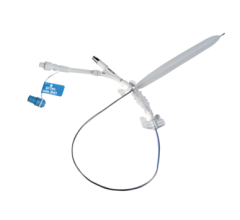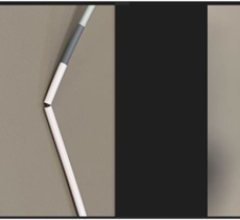January 21, 2009 - Invatec this week announced the European launch of a new peripheral balloon, the IN.PACT Amphirion paclitaxel-eluting PTA balloon catheter.
This is the first drug-eluting catheter designed specifically to treat atherosclerosis in arteries located below the knee (BtK). IN.PACT features FreePac, a proprietary coating that frees and separates paclitaxel molecules and facilitates their absorption into the wall of the artery. The FreePac coating was developed in close collaboration with the researchers who pioneered drug-eluting balloon therapy, Ulrich Speck, Ph.D., department of radiology at Charite Mitte, Berlin and Bruno Scheller, M.D., University Hospital, department of internal medicine, Homburg/Saar.
The company said drug-eluting balloons utilizing a special drug elution formulation have demonstrated effectiveness in the treatment of atherosclerosis and the prevention of restenosis.
Invatec plans to launch a randomized trial, the IN.PACT DEEP study, in the first half of 2009, to provide additional data about the effectiveness of this new treatment concept.
“After years of research we are pleased to see this technology available for clinical applications,” commented Prof. Speck and Prof. Scheller. “The drug-eluting balloon concept has the potential to reduce re-intervention rates for patients with atherosclerosis. Invatec’s balloon technology is an ideal platform for the FreePac coating and will allow for the development of specific solutions for additional endovascular applications including the superficial femoral artery (SFA).”
Prof. Dierk Scheinert, course director of the LINC interventional course in Leipzig, commented on the first IN.PACT Amphirion procedure, “Combining conventional balloon dilatation with local drug administration is a fascinating new concept for this patient group. Stents may not be a feasible option for the majority of BtK patients with advanced disease. The IN.PACT Amphirion therefore holds promise as an effective treatment for this challenging patient population.”
Impaired blood flow caused by blockages below the knee, also known as critical limb ischemia (CLI) result in pain, poor wound healing, gangrene and a high risk of death. According to data published in Wounds, 40 percent of patients require amputation within 12 months of a CLI episode, and there is an annual mortality rate of more than 20 percent.
For more information: www.invatec.com


 June 13, 2024
June 13, 2024 








